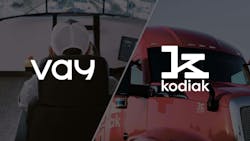Kodiak, Vay partner on Assisted Autonomy operations
Vay and Kodiak Robotics have partnered to enable Kodiak’s Assisted Autonomy elements of the Kodiak Driver. Assisted Autonomy allows a human to remotely control an autonomous vehicle in certain situations, such as at customer locations or when interacting with first responders.
